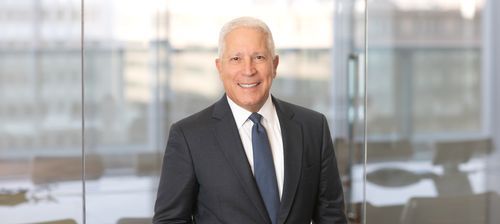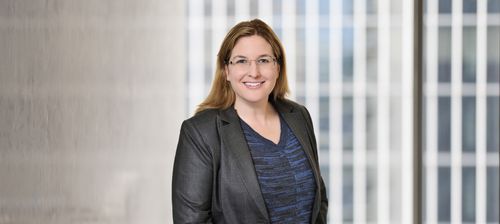News
META Monthly: Renewables Update - December 2018/January 2019
News
META Monthly: Renewables Update - December 2018/January 2019
VOLUME 4, ISSUE 1
Recent Trends in Financing Solar and Water Projects in the GCC
On November 6 and 7, the Projects, ECA & Structured Finance, Middle East & Africa 2018 conference was held in Dubai. This annual event is probably the leading conference on project finance for the region. Once again, Winston & Strawn co-sponsored the conference.
This issue of META Monthly, which is the final issue covering 2018, provides an overview of various topics discussed relating to renewables and water projects in the region. Our next issue, which will be our second issue of this January and the first for 2019, will address: The U.S. International Development Finance Corporation – Impact on Africa.
The event started by looking at transactions that had taken place in the region since the 2017 conference. In the areas of renewables and water and wastewater, these included:
Taweelah reverse osmosis desalination independent water project (IWP): Abu Dhabi Water and Electricity Authority (now Emirates Water and Electricity Authority (EWEC)) received bids in October 2018 for its US$ 1.2 billion Taweelah IWP, to be located 45km north of the city of Abu Dhabi. Seven consortia submitted bids. The consortium led by ACWA Power offered the lowest tariff - US$0.49 per m3. This was even lower than the US$0.53 per m3submitted by ACWA Power in August 2018 for Saudi Arabia’s Rabigh 3 IWP. Taweelah is expected to reach commercial operation in 2022 and will have a capacity of 200 million gallons per day (MIGD), through two 100MIGD units. EWEC will offtake all production from the plant under a long-term Water Purchase Agreement.
Umm Al Hayman waste treatment facility: In November 2018, German firm WTE Wassertechnik and Kuwaiti company International Financial Advisers (IFA) signed the contract to design, build, finance, operate, and maintain (DBFOM) the US$ 2 billion Umm al Hayman wastewater treatment facility and ancillary networks, with the Kuwait Authority for Partnership Projects (KAPP). The Umm al Hayman wastewater facility will be owned and operated by a special purpose vehicle—the Al-Zou Al-Oula company. Ownership of the SPV will comprise: WTE-IFA (40 percent); government agencies (10 percent); and allocated for citizens (50 percent). The debt financing stage is understood to be ongoing, with a range of international and local banks in discussions. The consortium will design, build, finance, operate, and maintain (DBOFM) the project under a 25-year contract awarded by KAPP. Umm al Hayman is planned to have an initial capacity of 500,000 m3per day, with the option to expand that by a further 200,000 m3per day.
Gulf of Suez PPA: In July 2018, a consortium comprised of Orascom Construction, Engie, and Toyota Tsusho Corporation signed an agreement with the Egyptian Electricity Transmission Company to develop a 500MW wind farm located near the Gulf of Suez in Egypt. The total project costs are estimated to be US$650 million. The wind farm is due to produce around 2 billion kWh energy per year and save the equivalent of 420,000 tons of oil. It is expected to reduce carbon dioxide emissions by 1.1 million tons.
Developments in Saudi Arabia: 2018 has been a very active year for Saudi Arabia with significant activity across the renewable, water, and wastewater sectors. In September a consortium led by Metito entered the lowest bid to develop the Damman West wastewater treatment plant, which will have a capacity between 200,000 and 330,000 m3per day. September also saw six bids submitted for the design, build, finance, operation, and maintenance of a 450,000 m3per day water desalination facility in Shuqaiq on the Red Sea coast. In November, a consortium led by ACWA Power was appointed preferred bidder for the Rabigh 3 IWP which will have a capacity of 600,000 m3per day; and an EDF-led consortium was appointed preferred bidder for the US$500 million, 400MW Dumat al Jandal wind farm project. November also brought the financial close of the Sakaka PV Solar Plant (300MW) PPP. Financing for the US$300 million project was provided by Natixis, which is expected to include a US$240 million debt package structured as a 20-25 year soft mini-perm.
Other recent projects, in areas other than renewables and water/wastewater, were touched upon, as the region has a large diverse pipeline of projects. These included transactions involving conventional power, petrochemicals, and LNG. However, the clear focus of the panel was on renewables and water. The following highlights some key points coming out of the comprehensive, wide-ranging and lively discussion.
Some Market Trends: The panelists had a range of views on the topic of market trends. A few key points:
- Investment in renewables and water continues to remain the central theme of energy programs in most countries in the region. However, this is not exclusive, as the panel touched on financing of conventional power and other types of large-scale energy-related projects (for instance, petrochemicals).
- The shift to stand-alone independent water projects (IWPs), as opposed to combined independent water and power projects (IWPPs), is continuing. Three key drivers for this are: (1) water needs in the region; (2) increase in capacity derived from renewable sources; and (iii) technological advances, such as reverse osmosis (RO). Also, the finance market is becoming more comfortable with IWPs.
- While on the one hand it is an exciting time for financing major projects, on the other hand due to the complexity of the transactions, combined with the number of deals in the market, it was acknowledged that flexibility is required on the financing side. No “one size fits all.”
- Traditional project finance financing is certainly very achievable in the countries in the region with strong credit agencies and for transactions involving strong sponsors with sectoral expertise.
- At the same time, the panel is seeing more and more mini-perm structures. This is driven by a combination of competitive pressures on sponsors, regulatory constraints on financiers, and procurers’ objectives.
- A common view was that the capital markets will play a more active role in financing large scale projects in the future.
Long-term Lending Capacity: The view that capacity is certainly there, but with the number of deals in the market, and the pipeline throughout the region, some institutions may be stretched. Moreover, many of the financial institutions that have been particularly active in the past would prefer to avoid long-term commitments. Local and regional financial institutions are playing a more active role in providing additional liquidity.
Evolution of the Abu Dhabi Approach: The panel discussed the progression of the very successful I(W)PP, independent sewage treatment project (ISTP) and now IWP program in Abu Dhabi. The financing of projects has shifted. The first mini-perm structure in Abu Dhabi was the ISTP2 financing in 2009, and that was an exception at the time. Now, the Abu Dhabi template expressly caters for mini-perm financing. Security of supply continues to be paramount. Abu Dhabi is looking to procure 7GW of new solar capacity by 2023, as well as significant additional RO capacity.
Solar PPAs: The panel discussed solar power purchase agreements (PPAs). It was acknowledged that the regional solar PPA precedent is largely based on the combined-cycle gas turbine (CCGT) precedent. Several participants noted that the difference in technology, and the developments in the solar area, continue to merit consideration of adjusting the forms of solar PPAs, relative to such areas as rejection rights, equity retention obligations, and liability caps on the EPC work.
Multi-source financing w/ ECAs and Development Institutions: ECAs and development institutions continue to play a very important role in financing major capex projects in the region. It was recognized that outside the GCC, development institutions, in particular, play an invaluable role in financing renewable projects (for instance, in Egypt and Jordan).
Capital Markets Financings/Refinancings: This was a major focus of the conference. The panel emphasized the importance of the capital markets going forward. However, as project bonds were the focus of other panels, this was not a topic discussed at length, other than recognizing the importance of considering and developing capital markets strategies for refinancings at the outset.
Chinese Participation in Recent Projects: The significant uptick in financing by Chinese financial institutions was discussed. This was considered to be another trend going forward, as the panel noted that that Chinese developers and contractors were becoming more active in, and experienced with, the regional market.
Potential Financing Challenges in the Short- to Medium-Term: Although it was recognized that challenges do continue to exist with regard to financing major projects, the general consensus was that the challenges are manageable for properly structured transactions.
1In conjunction with the conference, Messrs. Simpson and Christopher Shelton were also interviewed for the article that appeared in Bonds & Loans entitled: “MEGA in MENA: Large-Scale Infrastructure Pipeline Deepens and Broadens as PPP Rules Gather PaceBonds & Loans (MEGA in MENA)”


